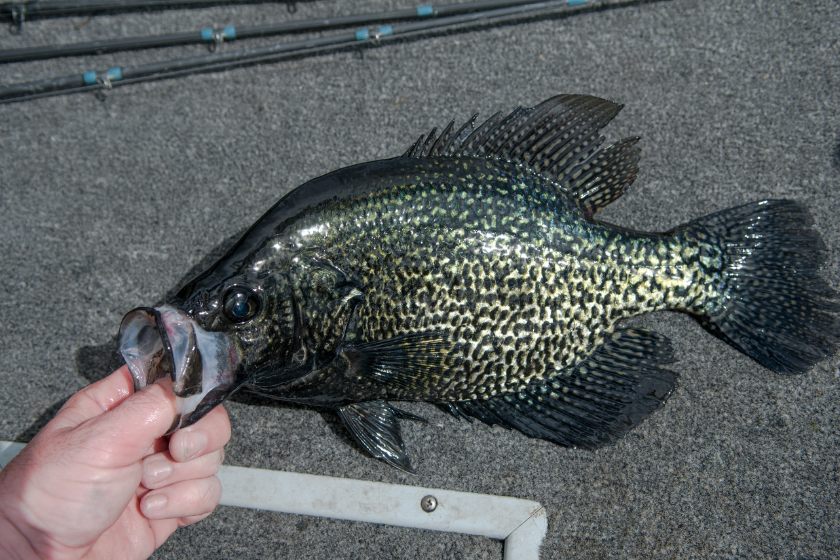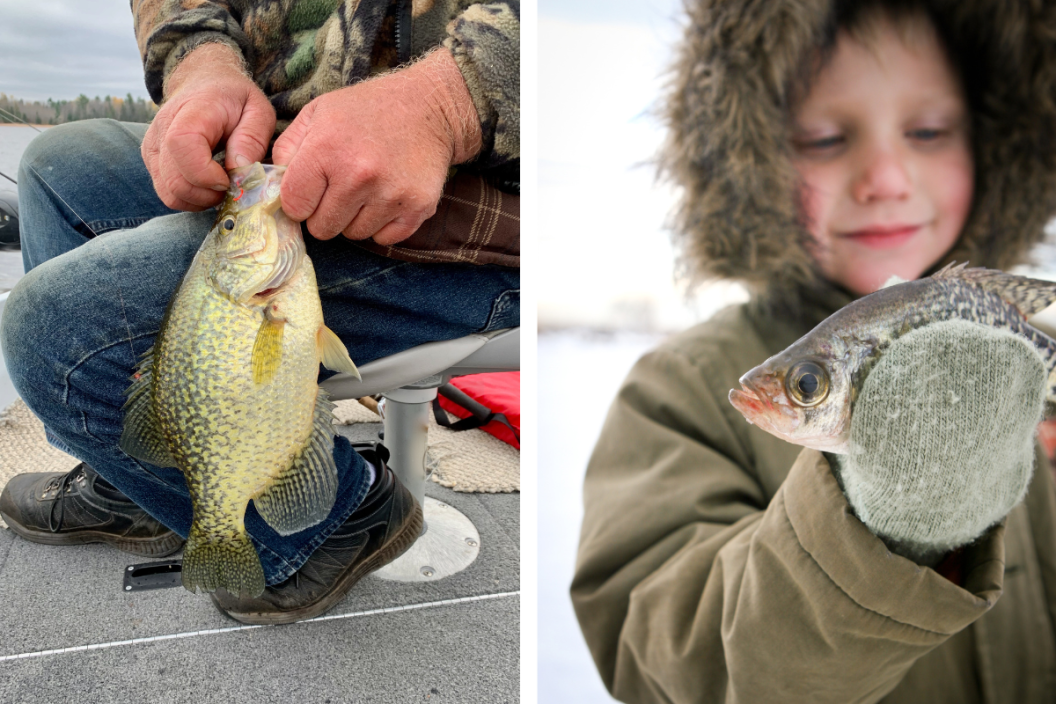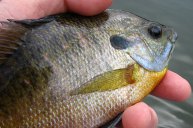Strawberry bass, calico bass, and even papermouth are among the beloved names we've given two of our favorite fish to catch and eat: the black crappie and white crappie. Our affinity for finding and catching these great gamefish spurns from how accessible they are, but also how they seem to disappear when you find them, causing us to yearn to search them out again. Oh, and it doesn't hurt that they taste great, too.
Entire legions of anglers have based their fishing lives around the crappie, but when targeting this speckled freshwater fish, do we know exactly which species it is? Whether you are a tournament angler or a weekend fisherman who wants to fill the fish bag with panfish, you'll want to know as much as you can about your quarry, including proper identification.
When it comes down to it, there are just a few subtle differences between black crappie and white crappie, such as their markings and body shape, but even their distribution is similar. We'll spell out a few more of the ways you can give these fish the right I.D.
White Crappie (Pomoxis annularis)

Jenniveve84 via Getty Images
As you will see, the two species have different scientific names, but they are both classified as part of the sunfish family tree, as are rock bass and bluegill. White crappies are most easily identified by counting their dorsal spines, which range from five to six, and checking for the vertical bar patterns on their sides. There are other differentiating factors as well.
White crappie tends to be a bit more elongated in the body and thinner than their counterpart, making them a bit lighter on the scales. They typically reach the 1/2- to 1-pound range, but the IGFA world record white crappie still stands at 5 pounds, 3 ounces. The white crappie has a mouth that is a bit longer and straighter than the black crappie, but either fish can be very light or dark colored, at least to the naked eye.
White crappie doesn't mind being in the open. They spend much of their time swimming in open water areas near cover, often in clear or murky conditions. I've caught crappie in lakes, slow-moving rivers, and ponds so small that you would never believe they could hold fish. They're a resilient fish and super fun to catch.
Black Crappie (Poxomis nigromaculatus)

ANDY_BOWLIN via Getty Images
The black crappie is generally shorter and stubbier than their lighter cousins, with many irregular dark blotches along their sides. Black crappie also has seven to eight needle-like spines on their dorsal fins, a few more than their white relatives, and a mouth that turns upward in profile.
While the average length of either fish can be anywhere from 8 to 15 inches, the thicker, sturdier black crappie can attain a weight from nearly one to over two pounds. The IGFA world record for the species now stands at a whopping 5 pounds, 7 ounces, caught in May, 2018 by Lionel Ferguson.
Both species will dine on minnow, shiner, or fathead, and both love to chow down on crawfish. Crappies - white or black - are also partial to night crawlers, grasshoppers, ants, and other terrestrial unfortunate enough to come their way.
Black crappies prefer lighter, more transparent waters but also reside in and around the cover of vegetation and other ambush locations such as dock pilings and sunken timber. As with white crappies, black crappies share a similar diet in minnows, shiners, crawfish, worms, crickets, and many other panfish baits.
Crappie Distribution
Significant overlap exists in the distribution of the two common crappie species, including areas where they have been introduced. Their most notable native habitats are based around the center of the nation eastwards, but there are non-native populations in the western U.S.
While they both blanket U.S. waters, they also reach up into southern Manitoba, Ontario, and Quebec in Canada. Anglers can find them from Minnesota, Wisconsin, and Michigan, all the way south to Florida. This fish is widely distributed for young and old anglers alike.
Spotting Hybrid Crappies
With the right conditions and in the proper areas, black and white crappies can reproduce efficiently. With this in mind, and in areas where they both exist, it is common for white and black crappies to cross-breed.
In waters where both thrive, hybrids will have the body type of white crappie and at least some vertical bars. The bars begin to become distorted or fade into a random speckled pattern towards the tail, or they may be stockier and shorter while having the spine count of black crappie. Hybrid crappies generally do not reproduce very well and breed far slower than black or white crappies. Not only that but the generation that follows after the initial breeding is very often unsuccessful.
Please check out my book "The Hunter's Way" from HarperCollins. Be sure to follow my webpage or on Facebook and YouTube.




